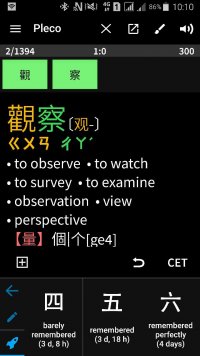Hi kirkyonyx,
you're welcome. The default values for the change of easiness are just a reasonable number.
How it happens is always more or less the same, i.e. through the same formula.

I created a new profile which has the default settings, and it says there that the easiness will change by -10 if you give an incorrect answer, and by +4 if your answer was correct.
It seems to me that there are two main paths: If you have
Prompt for quality enabled, the easiness changes in one of six ways you can set under
Tweak Parameters (which depend on your answer in a test, how well you knew the card from 1-6). If you have
Prompt for quality disabled, which is the default way, there are only the two values above you can set under
Tweak Parameters for the easiness to change, one of which would be for the "didn't know" you mentioned. How the easiness affects the score change is influenced by the easiness divisor, which works like this:
“
Easiness divisor is used in the formula for calculating a new card score after a correct answer. The card’s easiness factor (which defaults to 100) is divided by this amount, then multiplied by the card’s score to get the new card score. This is an easy way to quickly make the algorithm more aggressive (by lowering this value) or less aggressive (by raising it) in how quickly it increases cards’ scores.”
Pretty simple, isn't it?

(I know it's tricky to get one's point across over the forums without the ability to ask back and forth easily.)
Hope this helps, otherwise someone else can add to this.
Shun
PS: To be sure, I don't fully understand the current Pleco 3.2 scoring system. I prefer manual control, and I think Pleco 4's system is the one I will look at more fully. I just thought you might be happy with my level of knowledge regarding Pleco 3.2's system.




